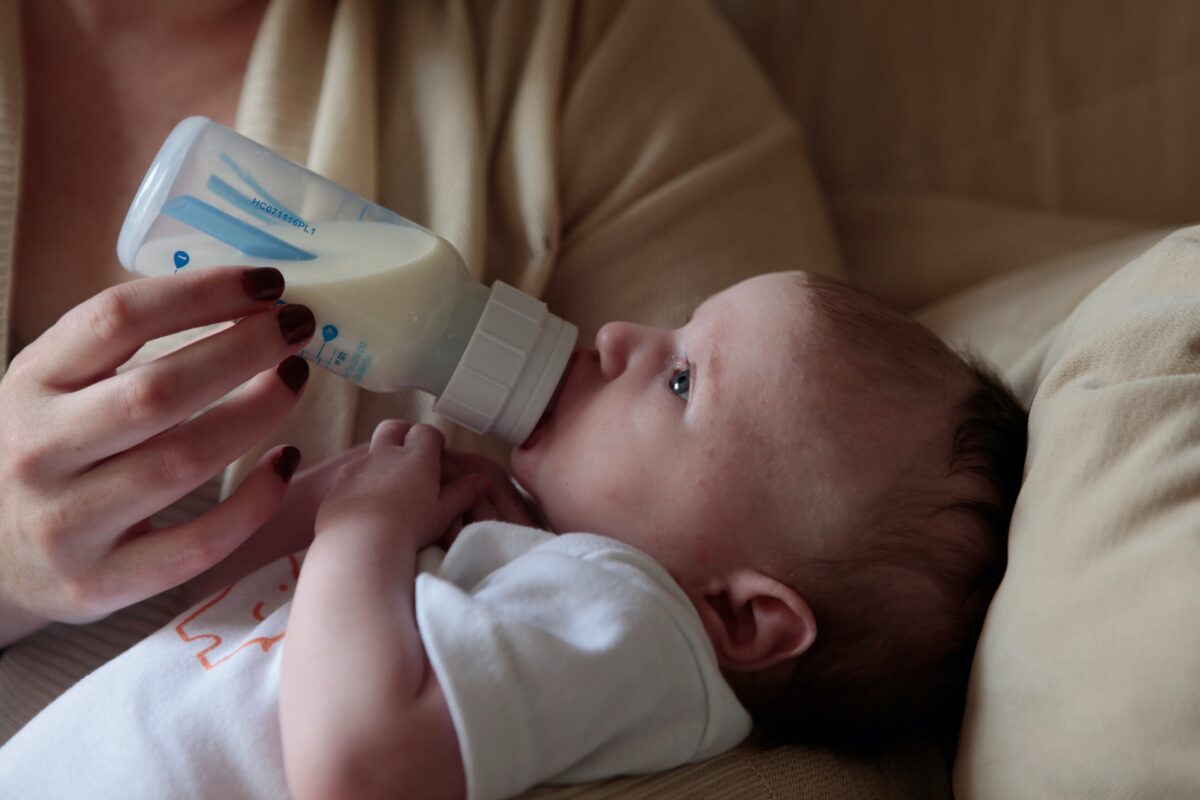Every mother wants the best for her child. But, sometimes work can interfere with how our newborns are fed. The general rule is to breastfeed your baby for the first six months. After maternity leave, many mothers don’t have the time to breastfeed their children, and sometimes things can go medically wrong and actually make your milk supply low.
But, what can you do if you don’t have the time to breastfeed? There are numerous alternatives to breastfeeding that provide almost the same amount of nutrients needed for your baby’s healthy development. Here are some of them.
Cow’s milk / Sensitive formula
Milk obtained from dairy cows is the most prevalent form. This type of milk is iron-fortified in most cases. The majority of its formula is made from cow milk that has been altered to mimic human breast milk. This choice, however, is not suitable for babies who have a milk protein allergy or lactose intolerance and is not recommended for infants under the age of one.
If your baby shows some signs of not tolerating cow’s milk, it means that their tummy may be on the more sensitive side. Some of the signs showing that their stomach is sensitive include symptoms like diarrhea, excessive gassiness, overall fussiness, and dissatisfaction. If this is the case, you should consider talking to your pediatrician about when to switch to sensitive formula in order to alleviate their pain.
Human milk has all the nutrients your baby needs for healthy growth. Although mixed feeding is not ideal, some breastfeeding is preferred to none. Avoid mixing expressed and formula milk in the same feed, and always consult with your pediatrician prior to changing your baby’s diet. HiPP goat milk formula stage 2 is also good as alternative milk. This premium formula is naturally gentle and wholesome for even the most delicate systems and is perfectly balanced for babies 6-12 months old. 100% natural nutritionally balanced and organic. It is also carefully designed with necessary vitamins and minerals such as Vitamins A, C, D, and iron to boost bodily and nervous system formation.
Express your breast milk
Since breast milk is the number one baby food for healthy growth, consider expressing your breast milk when you’re not busy. That way you will supply your baby with their needed nutrients and be able to get to work on time. On the plus side, expression can be done at a schedule of your choice, which gives you more time. One disadvantage is that this schedule is fixed and you must follow it carefully.
Yet another advantage of practicing this procedure beforehand is that you will be able to express and freeze milk for later use. It can be stored in a front opening freezer for up to three months and in a chest freezer for six months, if closed properly. This way your baby will bond with the other members of your family while being bottle-fed with your highly nutritional breast milk. Your pediatrician will make sure to give you an expression schedule that fits your needs and will make sure to give you the best advice for your little one.
Soy-based formula
Soy formula is becoming more popular as a substitute for cow’s milk formula. Many parents consider it for moral or environmental reasons, while others believe it will help their child with colic, allergies, or sickness later in life. If your baby can’t handle dairy-based formula, giving them a soy-based formula is a safe and nutritious option. For more than a century, soy formula has been used to safely feed healthy newborns. As a result, it can be regarded a suitable feeding option for the majority of infants. However, there are some risks associated with using soy formula, and it may not be a healthy feeding option for all babies.
Aluminum levels in soy-based formulas are higher than in breastmilk and cow’s milk formulas. Preterm infants and babies born weighing less than 4 pounds may be harmed by the large quantities of aluminum. Healthy babies born to term, on the other hand, do not appear to be at risk. For most healthy babies, soy formula is likely safe. It’s just as healthy as other formulas, and it’s probably the best option for newborns suffering from galactosemia or hereditary lactase deficiency, and even vegan families. If you happen to have extra formula that you wont be using anymore check on Sell Formula where you can earn extra money for selling your extra formula and it will be put to good use too.
Final Thoughts
There are many formulas to feed your baby with. They can be lactose-based, plant-based or they can be sensitive formulas. All of them are nutritious for different babies, but not one formula comes even close to human milk, no matter if it’s the mother’s milk or someone else’s. If breast milk is a feasible option, you should always consider that first, seen as human milk is especially made by the body for babies.
Consulting your pediatrician should always be your number one thing to do when it comes to your newborn. They will always tell you what are the best options for your baby and guide you through every journey that arises.
